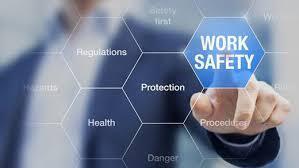
Imagine that you are at your workplace, and the typical routine of work and chats is going on as usual. Suddenly, an unpredictable event occurs that disrupts the environment and puts everything in disarray.
Explosion or burn accident and injury is not a mere imagination of some people; it is a real-life experience that has transformed countless lives. What measures should be taken to avoid such disasters?
What responsibilities do the employees have in relation to the protection of their workplaces?
Now, it’s time to look at the details of the workplace safety in relation to the responsibilities of the employees and strict safety procedures that may help to avoid explosions.
Remember that if you are not being compensated for any personal injury damages then Big Tex Injury Lawyers have your back. They ensure that you get maximum compensation for your damages.
The Prelude to Safety: Awareness of Risks
For one to appreciate the significance of safety standards and the roles of employees in the matters, it is necessary to have a clear understanding of the explosions that may occur in workplaces.
These accidents can happen in many places, including production facilities, chemical processing plants, and laboratories.
Some of the causes may include flammable gases, combustible dust, vapors, and combustible chemicals.
All of these components can become time bombs in the making if not properly managed.
Employee Responsibilities: The first line of defense
In most organizations, employees are the initial protectors against the occurrence of workplace accidents such as explosions. This applies to their diverse responsibilities, which involve taking the necessary precautions to ensure safety.
1. Vigilant Awareness and Reporting
This means that employees need to be very cautious at work and always alert to the dangers that may be lurking around.
This awareness also involves knowledge of the signals of hazardous conditions like presence of gas, poor storage of the flammable substances or a faulty equipment.
2. Adherence to Safety Protocols
It is a common practice in all organizations to establish safety measures to minimize various dangers.
It is crucial to follow these guidelines strictly as employees. This compliance involves wearing personal protective equipment (PPE) as helmets, gloves, and protective clothing as well as dealing with the dangerous products.
3. Participation in Safety Training
Seminars and orientations help the employees understand and possibly even prevent or be ready to handle emergencies.
It is crucial to join these sessions. Workers should participate fully, being curious and demanding further details on safety measures.
Safety Standards: The Spine of Prevention
Employee responsibilities are part of the initial line of defense, while safety procedures are the structural framework for safety.
These standards are set through regulations and benchmarks to reduce the probability of an explosion happening.
1. OSHA Regulations and Standards
OSHA provides detailed rules and policies aimed at protecting employees against hazards at the workplace.
These regulation include but not limited to storage and disposal of hazardous substances and the control of substances hazardous to health, control of ventilation, arrangement and management of safety.
OSHA standards are required to be followed and this is enforced through inspections at regular intervals.
2. Hazard Communication Standard (HCS)
The HCS or the “Right to Know” law mandates employers to communicate to employees the potential danger of chemicals that they are likely to encounter in the workplace.
This standard requires chemical identification, ensuring SDS is available, and employee training on chemicals. Thus, by making employees knowledgeable about the dangers of sparks, the HCS greatly decreases the chances of an accidental explosion.
3. NFPA codes are codes that are developed and set by the National Fire Protection Association.
The NFPA works with the aim of developing codes and standards that would help in minimizing fire and explosion risks.
Two of them are NFPA 70 National Electrical Code and NFPA 30 Flammable and Combustible Liquids Code.
Some of these codes include the code governing safe electrical installations and the code covering the storage and use of flammable liquids.
The necessity of compliance with NFPA standards cannot be overemphasized since the presence of ignition sources may lead to explosions.
Creating a Culture of Safety
1. Leadership Commitment
It is the leadership's responsibility to ensure that a safety culture is adopted at the corporate level.
When leaders show a level of interest and commitment toward safety, they become the ultimate model for the organization.
This commitment can be demonstrated through safety meetings, provision of safety equipment and equipment, and practicing open door policy in handling safety issues.
2. Open Communication
The discussion of safety problems and concerns enables the development of a safety culture that recognizes and addresses potential risks.
There should be free and clear communication channels where employees can raise their concerns regarding risks without being punished.
To support this openness, it is possible to conduct daily safety briefings and create an anonymous reporting platform.
Website of Source: https://bigtexinjurylawyers.com/
Source: Story.KISSPR.com
Release ID: 1079153
